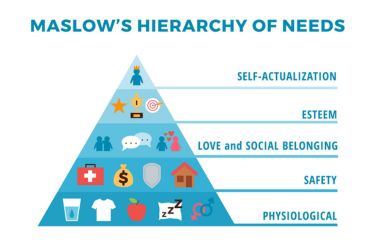Many of us feel like life moves too quickly, and it can be hard to enjoy what is happening right now. Mindfulness is the practice of paying close attention to the present moment, which helps us experience life more fully and appreciate what we have. By focusing on where we are and what we are doing, we can let go of regrets about the past and worries about the future.

Learning to live in the moment means being aware of our thoughts, feelings, and surroundings as they happen, without judgement. Even small changes in our daily routine, like taking a few deep breaths or noticing the things around us, can help us feel calmer and more focused. When we practise mindfulness, we give ourselves the chance to slow down, feel less stressed, and connect better with ourselves and others.
Key Takeaways
- Mindfulness helps us live in the present moment
- Simple daily techniques can improve our focus and calmness
- Mindful living makes it easier to manage stress and enjoy life
Understanding Mindfulness and Living in the Moment

Mindfulness involves being aware of our thoughts, feelings, and surroundings as they happen. By focusing on present experiences, we can better manage stress and improve our well-being.
What Does It Mean to Live in the Moment?
Living in the moment means giving our attention to what is happening now, rather than letting our minds drift to worries about the past or future. We notice what we see, hear, and feel, using our senses to ground ourselves in the present. This may be as simple as noticing the feeling of water on our hands while washing up or hearing birds outside as we walk.
We often forget the present and miss small moments when distracted by thoughts or technology. Being present lets us appreciate life as it unfolds. It is not about ignoring responsibilities but about carrying them out with awareness. We experience things more fully and can respond to situations with a clear mind.
The Essence of Mindfulness
Mindfulness is the practice of paying attention to our thoughts, emotions, and sensations without judgement. We observe what is happening internally and externally on purpose. According to Jon Kabat-Zinn, mindfulness is “awareness that arises through paying attention, on purpose, in the present moment, non-judgementally”.
This practice helps us notice habits like reacting quickly when stressed. Instead, we can pause and choose a different response. Mindfulness encourages acceptance of each moment, whether it feels pleasant or challenging. This mindset supports emotional balance and reduces stress.
Common mindfulness exercises include focusing on our breathing, doing a body scan, or eating slowly and noticing each bite. These activities help train our attention to stay with what is happening right now.
Awareness Versus Automatic Living
Many of us go through daily routines on “autopilot”, not really paying attention to what we are doing. We might get dressed, eat, or travel without remembering the details. This automatic living often leads us to miss out on the present.
Practising awareness means tuning in to each action and thought as it comes. We become more aware of our choices and how we feel. This helps us break out of the cycle of acting without thinking.
To shift from automatic to mindful living, we can start by picking one activity each day to do with full attention. For example, we can focus deeply when drinking a cup of tea or listening to someone speak. Gradually, this skill grows, and we find ourselves more present in other parts of life too.
Core Benefits of Mindful Living

Mindful living helps us feel calmer, handle stress better, and connect more deeply with others. When we practise mindfulness, we become more present and aware, which can lead to real improvements in our daily lives.
Reducing Stress and Anxiety
When we focus on the present moment, we often notice less stress and fewer anxious thoughts. Stress usually comes from worrying about the future or dwelling on the past. Mindfulness teaches us to pay attention only to what is happening right now.
Breathing exercises, body scans, and focusing on simple sensations all help to ground us. This can lower tension in our bodies and quiet racing thoughts. Over time, we find it easier to reset when our minds wander or negative thoughts return.
Many studies show that mindfulness reduces the signs of anxiety. We become less reactive to tough situations and can keep a clearer state of mind. This makes daily problems feel more manageable.
Key benefits:
- Lower stress levels
- Reduced anxious feelings
- Calmer physical and emotional state
Enhancing Mental Wellness
By practising mindfulness, we support our mental health in many ways. Being aware of our thoughts lets us notice negative patterns more quickly, so we can let go of what is unhelpful. This self-awareness gives us more choice in how we react.
Regular mindfulness practice improves our mood by helping us accept things as they are. We spend less time judging ourselves or others. This can lift our sense of well-being and even help with symptoms of depression.
Mindfulness can also make us more productive. When we are present and focused, tasks become easier to manage. We are less distracted, which allows us to complete work more efficiently.
Benefits include:
- Increased self-awareness
- Better mood and emotional resilience
- Improved productivity and concentration
Improving Relationships
Mindfulness makes us pay more attention to the people around us. We listen better and respond more thoughtfully, instead of reacting out of habit. This brings more honesty and patience into our conversations.
When we are present, we notice changes in the moods or needs of others. This makes it easier to support friends, family, or co-workers in meaningful ways. It also helps reduce misunderstandings and arguments.
By practising mindfulness together, we can build stronger and more caring connections. Shared mindfulness moments, like taking a mindful walk or eating a meal in silence, encourage trust and mutual respect.
Practical effects:
- Better communication
- Deeper empathy
- Fewer conflicts and stronger bonds
Practical Mindfulness Techniques

There are many ways we can practise mindfulness throughout our day. Using simple strategies, we can stay aware of our surroundings and our inner feelings, manage stress, and develop greater focus.
Mindfulness Meditation
Mindfulness meditation helps us pay attention to the present, letting go of distractions from our thoughts. We usually set aside time to sit quietly, close our eyes, and focus on our breath or a chosen sound. If our minds wander, we gently return our focus.
It is helpful to start with short sessions, such as five or ten minutes, and slowly build up. Some of us might repeat a calming word, or simply notice the rise and fall of our breath. Guided meditations are available in apps or online, which can be useful for beginners.
Meditating regularly trains our minds to notice thoughts and feelings without judgement. This practice can lower stress, help us feel calmer, and make it easier to stay focused in every part of our lives.
Mindful Breathing and Breathing Exercises
Mindful breathing keeps our attention on the act of breathing. Focusing on the air moving in and out of our lungs helps anchor us when we feel distracted or stressed.
A common breathing exercise is box breathing: we breathe in for four seconds, hold for four, breathe out for four, and hold again for four seconds. By repeating this a few times, we slow down our thoughts and bring calm to our bodies.
Another technique is belly breathing. We place a hand on our stomach, take a deep breath, and feel our stomach rise. This simple act can soothe anxiety and bring us back to the moment.
Practising mindful breathing can be done anywhere—during a break at work, waiting for the bus, or before sleep. Even a few minutes can make a difference.
Incorporating Mindfulness into Daily Routines
Mindfulness does not have to be limited to formal meditation. We can add mindful moments into daily activities, like eating, walking, cleaning, or getting ready in the morning.
For example, when eating, we can pay close attention to how food looks, smells, and tastes, and notice each bite. During walks, we observe the sounds around us, the feeling of our feet touching the ground, or the air on our skin. While brushing our teeth, we can notice the sensation, taste, and even the sound.
These small actions remind us to return our focus to the current moment. By weaving mindfulness practices into our routines, we find more opportunities for calm and presence throughout the day.
Yoga and Movement Practices
Yoga combines movement, breath, and awareness. We follow a series of poses, or asanas, and match each movement with our breath. Yoga helps us notice where our bodies are tense and encourages us to release tightness mindfully.
Simple stretching or gentle movement, like tai chi, can also be used to practise mindfulness. We might try focusing on our steps as we walk or pay attention to how our muscles feel during exercise.
Yoga does not require advanced skills. Even basic poses and slow movement can help us connect with our bodies and quiet our minds. Through mindful movement, we develop both strength and calm, making it easier to live in the present.
Building Awareness in Everyday Life

We can build awareness by focusing on our senses, moving more slowly, and releasing worries about the past or future. These steps help us stay in the present moment and appreciate daily life with more clarity and calm.
Engaging the Senses
Bringing our attention to the senses is a simple way to anchor ourselves in the present moment. We can start by noticing what we see, hear, smell, taste, and feel right now. For example, while drinking tea, we can observe the warmth of the cup, the aroma, and the taste with each sip.
When we go for a walk, we can feel the ground under our feet, hear the sounds around us, and notice the colours and shapes we pass. Paying attention to these details helps us become more aware of where we are and what we are doing, instead of running on autopilot.
By using all our senses, we train our minds to focus on this moment rather than drifting into distraction. This creates a habit of coming back to awareness any time we feel lost in thought.
Slowing Down and Noticing the Everyday
We live busy lives, and it is easy to rush through daily habits without really noticing them. When we choose to slow down and focus on each task, like brushing our teeth or washing dishes, we can find more meaning in simple moments.
Ways to slow down:
- Take deep, slow breaths before starting a new activity.
- Do one thing at a time, instead of multitasking.
- Pause for a moment and notice your surroundings.
By building small pauses into our daily routine, we give ourselves the chance to notice how we feel and what is happening around us. This helps us respond instead of react, and keeps us centred in the present.
Letting Go of Past and Future Concerns
Thoughts about the past and future can take us out of the present moment. While it is normal to remember or plan, getting stuck in these thoughts may make us feel anxious or distracted.
Mindfulness teaches us to notice when our minds wander and gently bring our attention back to now. Simple techniques, such as focusing on our breath or repeating a grounding phrase like, “I am here,” can help interrupt worries and return our awareness to the present.
Over time, letting go becomes easier. We do not ignore our concerns, but we choose not to let them take over our minds. This practice allows us to enjoy what is happening right now and respond calmly to daily challenges.
Overcoming Common Obstacles to Living in the Moment
When we try to focus on the present, several challenges can get in our way. These include mental distractions, negative thought patterns, emotional struggles such as anxiety and depression, and the constant pull of digital devices.
Recognising Distractions and Negative Thinking
Distractions come in many forms—our busy thoughts, worries about the past, or regrets about missed chances. These can pull our attention away from what’s happening right now. Negative thinking is a common barrier, making us doubt ourselves or expect the worst.
We can start by noticing when our thoughts drift or turn negative. Some people keep a simple journal to track common triggers. It’s also helpful to pause and ask, “Is this thought helping me in this moment?” Taking slow, deep breaths gives us a moment to reset our focus.
Using mindfulness exercises, we can gently bring our attention back to our breath, sounds, or what we see around us. Practising this regularly helps us build the mental strength to stay in the present.
Addressing Anxiety and Depression
Anxiety and depression often make it hard for us to live in the moment. Worries about the future, and feelings of sadness or hopelessness, can consume our thoughts. This can affect our overall mental health and make daily life feel overwhelming.
Building a routine that includes mindfulness can help ease symptoms of anxiety or depression. We might start with five minutes of mindful breathing or short walks outdoors, quietly observing the world around us. Sometimes, repeating a positive phrase or using grounding techniques—such as naming objects around us—can bring us back to the present.
If anxiety or depression is affecting our ability to function, it’s important to seek support from a mental health professional. Techniques like mindfulness-based cognitive therapy (MBCT) are designed to help manage these challenges.
Avoiding Multitasking and Digital Distractions
Multitasking often feels productive, but it splits our attention and makes us less present. Constant emails, notifications, and switching between tasks can leave us feeling scattered and stressed.
We can set up boundaries for technology use, such as putting our phone in another room during meals or work. Using simple strategies—like focusing on one task at a time—improves our concentration. Try blocking time for “digital-free” moments during the day. A table can help us plan:
| Time of Day | Activity | Digital Devices? |
|---|---|---|
| Breakfast | Eating, talking | No |
| Mid-morning | Work Task | Yes (needed) |
| Lunch Break | Walking outside | No |
Limiting notifications and turning off social media alerts also reduces interruptions. By controlling our environment, we support our efforts to stay present.
Frequently Asked Questions
We can use mindfulness to help manage anxiety, improve happiness, and increase our awareness of the present. Challenges such as worry and low mood may arise, but there are practical steps we can take to address them.
What are effective techniques for managing anxiety while trying to stay present?
We can focus on our breathing, paying attention to each breath in and out. This helps calm the mind and makes it easier to stay present.
Some of us may benefit from grounding exercises. For example, we can try naming five things we see, four things we touch, three things we hear, two things we smell, and one thing we taste. Keeping our minds in the here and now often helps reduce anxious thoughts.
How can one achieve happiness by focusing on the present moment?
We become more aware of small moments that bring joy, like enjoying a warm drink or listening to music. These little pleasures can lift our mood when we pay close attention to them.
By letting go of worries about the past or future, we give more space for contentment to grow. Being present allows us to notice the good in each day.
What are the common challenges when attempting to live in the present?
Many of us struggle with distractions from our phones, work, or other people. Our minds often wander to worries about the future or regrets from the past.
We might also find it difficult to accept uncomfortable thoughts or feelings. It can take time and effort to get used to new habits like mindfulness.
How can I practice present moment awareness in my daily life?
We can set aside a few minutes each day to sit quietly and pay attention to our senses or breathing. This builds focus and awareness.
Using prompts throughout the day, such as noticing the feeling of water when washing our hands, can help bring our attention back to the moment. Short pauses allow us to reset and be aware of our actions.
What strategies can help in remaining present amidst constant worry?
We can write down our worries in a notebook, then set them aside and bring our focus back to what we are doing right now. Labelling thoughts as just "thoughts" helps to stop them from taking over.
Physical activities, like walking or stretching, can also help shift our focus from our worries to what our body is doing and feeling.
What steps can one take to be more present despite feeling depressed?
Starting with small, simple tasks, such as making tea or looking outside at nature, can make mindfulness feel more manageable. We focus on the sights, sounds, or smells around us, even if only for a minute.
It’s important to be patient with ourselves. Practising mindfulness in small steps gives us time to build comfort with being present, even during difficult moments.





















